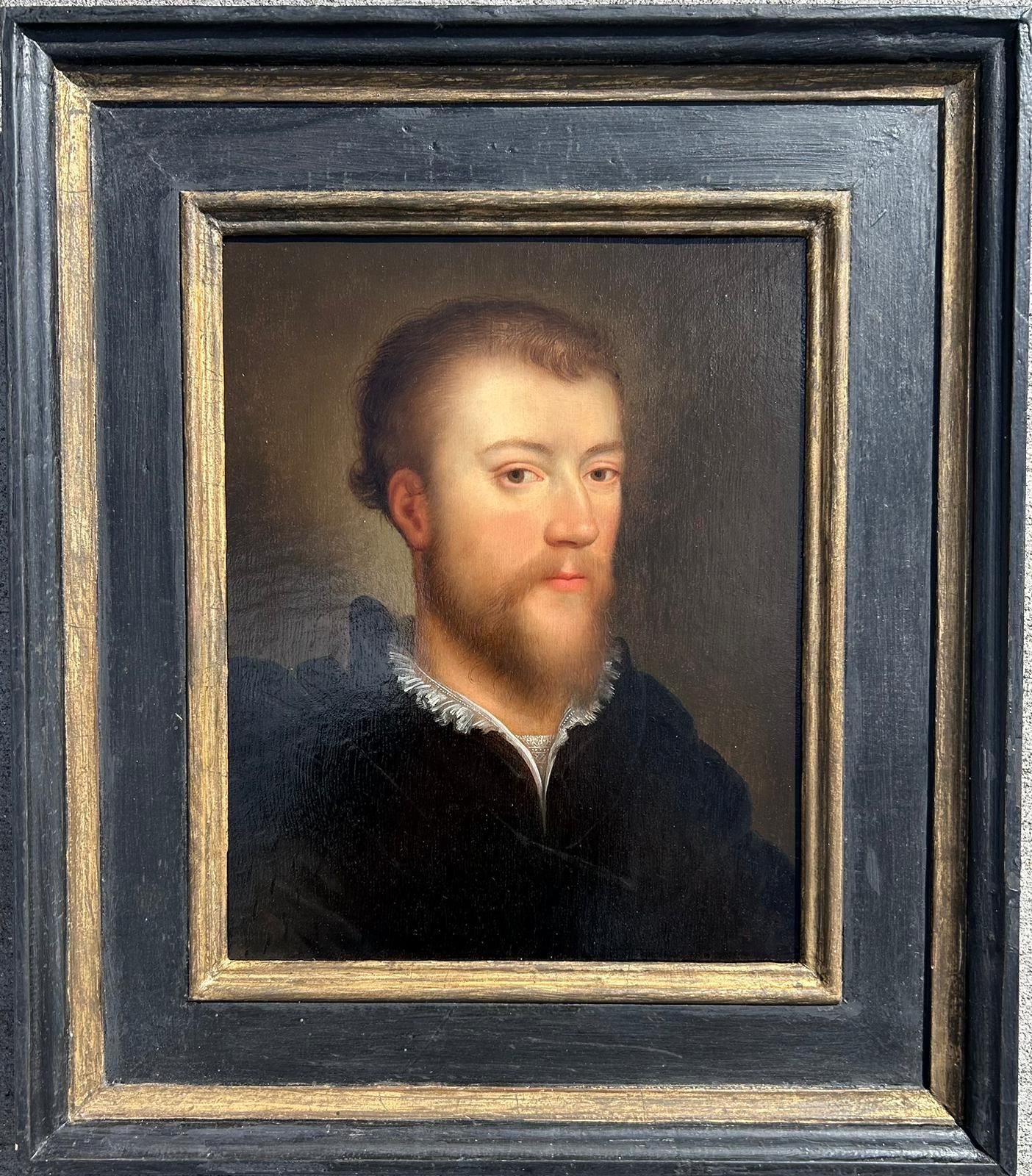

Remigius Van Leemput
Portrait of Nicholas Poyntz
Oil on oak panel
Image size: 13 x 10 1/4 inches (33 x 26 cm)
Contemporary style frame
Provenance
The Dalva Brothers Collection
Sir Nicholas Poyntz
Sir Nicholas Poyntz (1510-1556) was a prominent English Courtier and landowner during the later part of Henry VIII’s reign.
Poyntz was a supporter of the dissolution of the monasteries and the religious change under Henry VIII for which he received his knighthood. His loyalty to the crown was confirmed by Henry VIII and Anne Boleyn’s visit to his lodgings at Acton Court, Gloucestershire.In anticipating this visit, Poyntz had built new rooms for his royal guests, all of which still remain today. Poyntz’s dedication to the throne was also exemplified through his presence at court for important state occasions, such as the christening of Prince Edward, the arrival of Anne of Cleves, and the welcoming of the Admiral of France in 1546.
In 1539 and 1545 he served as High Sheriff of Gloucestershire, later representing Gloucestershire in Parliament as a Knight of the Shire in 1547 before marrying Joan, the daughter of soldier and aristocrat Thomas Berkeley, 5th Baron of Berkley. Nicholas Poyntz’s marriage into the Berkeley family involved him in frequent litigation with his wife’s kinsmen over her claim to certain property. He was also sued in the Star Chamber for assault and for poaching and in 1533, as steward to the bishop of Worcester in Gloucestershire, he was accused of holding courts and taking fines without his master’s permission.
Poyntz had become a soldier at an early age. In 1534 he fought in Ireland under Sir John St. Loe. In 1536 he served under Sir William Kingston during the northern rebellion: early in 1543 he was assigned to go with Sir Robert Bowes to the Netherlands, but by July he was in command of a patrol guarding the Bristol Channel and its approaches.During the war of the Rough Wooing, part of the Anglo-Scottish wars of the sixteenth century following the English Reformation, Poyntz commanded the warship the Great Gallery and later in May 1544 under command of the Earl of Hertford, burnt down Kinghorn and other towns in Fife while Edinburgh was sacked and burnt by the English.
Remigius Van Leemput
Remigius Van Leemput, known in England as Remeee, was a Flemish portrait painter, copyist, collector and art dealer. Born in Antwerp, Leemput trained in the local Guild of Saint Luke as a pupil of Frans van Lanckvelt the Elder between 1618 and 1619.
Leemput spent a lot of his time in England and was a key collaborator of Sir Anthony Van Dyck during Van Dyck’s final stay in London. Gaining a prominent position in the London art world, Leemput became an art dealer and major collector of paintings and drawings. However, after the execution of Charles I of England in 1649, his art collection was broken up and sold off in order to repay the debtors of the former king.
Leemput was known for his original works as well as for his small-scale copies after van Dyck, Lely and others. In 1667 Leemput was commissioned by Charles II to make a small copy of the wall painting by Hans Holbein the Younger representing Henry VII, Elizabeth of York, Henry VIII and Jane Seymour at the Palace of Whitehall in London for his own collection.
Museums
The Royal Collection
National Portrait Gallery

